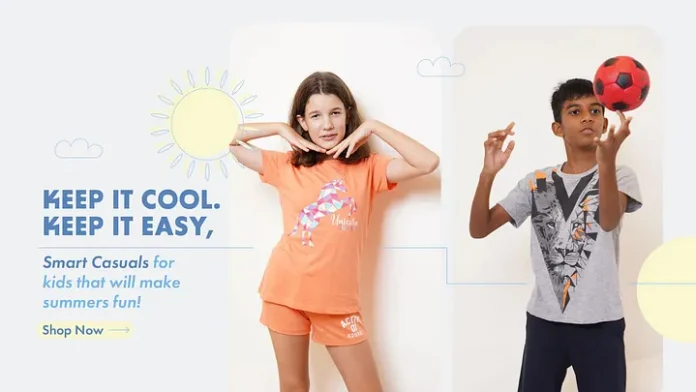It was a sunny Saturday morning when Sara stood at her son’s closet, wondering how he’d outgrown his favorite T-shirt yet again. Parents everywhere know this feeling. In today’s fast-changing fashion landscape, finding kids’ wear that balances style, comfort, and room to grow is more than a trend — it’s a parenting essential.
Why Kids’ Fashion Trends Matter in 2025
The children’s fashion world is evolving rapidly. According to Statista, the global children’s apparel market is expected to reach $339 billion by 2025. As parents seek more from their kids’ clothes — functionality, flair, and sustainability — brands are stepping up with smart, stylish options.
Modern kids wear fashion trends aren’t just about cute prints. Today’s parents want versatile, durable, and breathable outfits that match their child’s active lifestyle. And yes — comfort is just as important as looking good.
The Style-Comfort-Growth Triangle
1. Stylish Kids Clothing That Speaks:
Gone are the days of plain T-shirts and basic jeans. Stylish kids clothing now includes bold patterns, funky prints, and influencer-inspired mini-outfits that reflect each child’s personality.
2. Comfortable Clothes for Kids:
Parents prioritize soft, stretchable materials like organic cotton blends. Comfortable clothes for kids should move with them, not restrict their natural energy.
3. Clothes That Grow with Them:
Smart choices like adjustable waistbands, longer hems, and stretch fabrics extend the life of every piece — essential for growing children.
Sustainable Kids Wear: Good for Skin & Earth
Sustainable kids wear is gaining serious traction. More brands are now using eco-friendly fabrics, recycled materials, and ethical production practices. These clothes are not only better for the planet, but they’re often softer and safer for your child’s skin.
Trending in 2025: Eco-conscious clothing lines for kids that focus on both comfort and environmental care.
Tips to Build a Smart Kids Wardrobe
Here are a few practical kids wardrobe tips every parent should know:
- ✅ Invest in versatile basics that can be mixed and matched
- ✅ Choose machine-washable fabrics for easy care
- ✅ Look for stretchy and adjustable fits to handle growth spurts
- ✅ Explore sustainable kids fashion brands for quality and durability
- ✅ When in doubt, prioritize comfort over trends
Looking for the best fabric for kids clothes? Go for organic cotton, bamboo blends, or moisture-wicking soft knits — ideal for school and play.
Final Thoughts
As we head deeper into 2025, kids fashion trends continue to emphasize comfort, creativity, and care. Whether you’re buying for a toddler or a tween, aim to balance fun styles with functional design. With smart choices and the right priorities, you can build a wardrobe that keeps up with your child’s growth — and looks great doing it.
What do you value most when shopping for your child’s clothes — style, comfort, or sustainability? Let us know in the comments!
